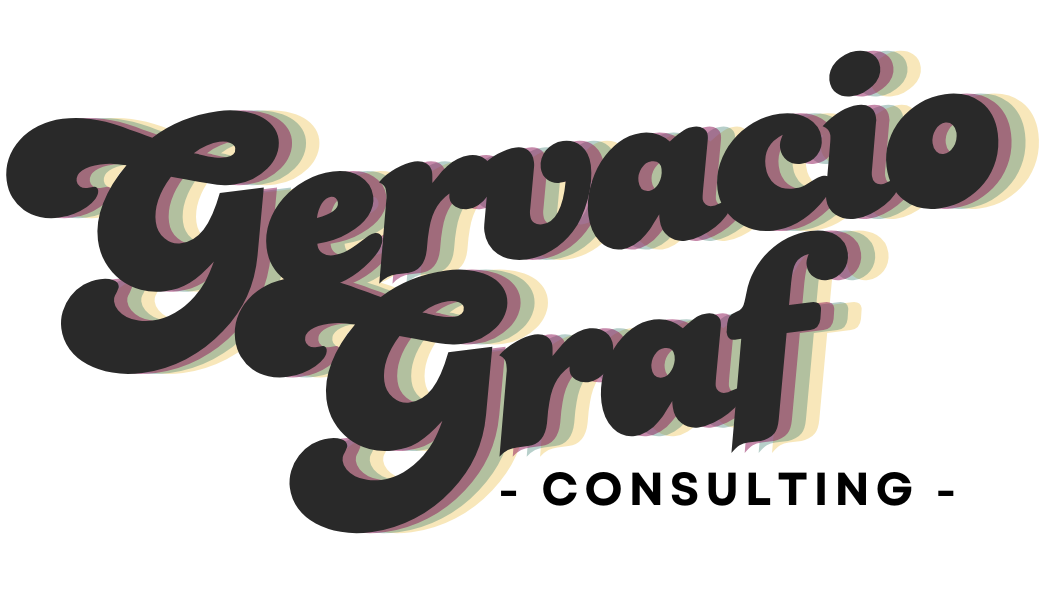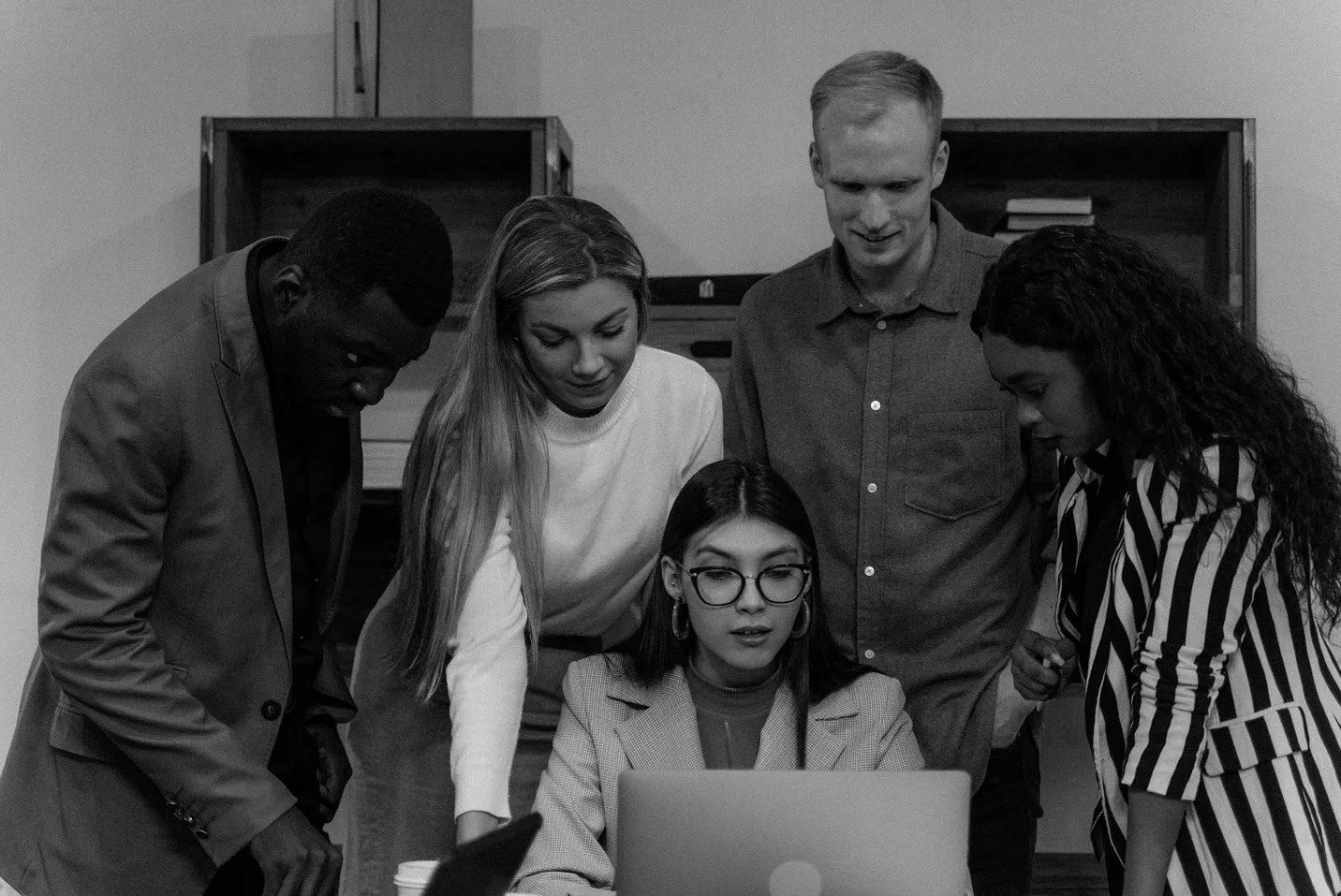
The Culture Reset is a the think tank platform through Gervacio Graf Consulting focused on transforming workplace culture through research-driven insights, compassionate leadership strategies, and inclusive organizational practices. The Culture Reset empowers companies and professionals to navigate change, reduce harm during layoffs, and build healthier, more equitable work environments.
Through speaking engagements, strategic content, and executive advising, The Culture Reset is shaping the future of work—one reset at a time.
Who Shapes Culture?
Culture isn’t just shaped at the top. It is carried by your managers. Every day, they set the tone, model behavior, and influence whether teams feel safe, valued, and empowered.
A Strong Culture
Let’s bust the myth: Good culture isn’t about being nice—it’s about being real. Real cultures face conflict, protect people, and build trust through honesty, not fake smiles. Nice is surface. Culture is system.
The War on DEI Is a War on Business Success
So, who really benefits from dismantling DEI? Let’s expose the truth.
Let’s address the elephant in the room: Diversity, Equity, and Inclusion (DEI) is under attack.
In recent years, critics have painted DEI as a form of reverse discrimination, a hiring quota system, or a way to put “less qualified” candidates in positions they don’t deserve. But here is the reality—DEI is not about lowering the bar. It is about raising it by ensuring businesses tap into the full spectrum of talent, ideas, and innovation available. And the only way to make that happen is by ensuring they have a seat at the table.
And the numbers back it up.
Companies with diverse teams outperform their competitors.
A 2023 McKinsey report found that companies in the top quartile for ethnic and racial diversity are 36% more likely to financially outperform their industry peers.
Gender-diverse executive teams? 25% more likely to be profitable.
Inclusive companies attract top talent.
A 2024 LinkedIn survey found that 76% of job seekers consider diversity an important factor when evaluating companies. Want to hire and retain the best? You need an inclusive culture.
DEI fosters innovation.
A study by Boston Consulting Group showed that companies with above-average diversity on their leadership teams generate 19% more revenue from innovation. More perspectives = more creative problem-solving
Here are some great examples of how DEI has benefited the population:
Microsoft’s Neurodiversity Hiring Program modified the traditional interview process to focus on practical skills rather than social interactions. This initiative led to increased innovation, productivity, and retention within the company while providing career opportunities to highly skilled individuals who may have struggled with conventional hiring methods.
Researchers have developed crash test dummies that better represent female anatomy. Historically, crash test dummies were designed based on the average male body, which led to significant safety disparities for women, smaller individuals, and other body types. Studies show that women are 73% more likely than men to be seriously injured in a car crash and 17% more likely to die, even when wearing seatbelts because regulatory tests are ran utilizing male test dummies which creates a gap in safety for those who fall outside the standard.
Latinas in power. Latinas are a powerful consumer group, influencing over $1.9 trillion in purchasing decisions in the U.S. Yet, retail leadership often lacks Latina voices at the decision-making table. Having Latina executives ensures that marketing, product selection, and customer experience align with the needs and preferences of this fast-growing market.
By expanding our views, we allow for a more understanding workplace, a safer community, and products that reflect who we are as a community.
The Hidden Price of Standing Still:
Why Staying the Same Is More Expensive Than Change
Change is expensive.
It takes time, resources, and effort. It disrupts workflows, forces people out of their comfort zones, and—let’s be honest—it’s uncomfortable.
But you know what is even more expensive? Refusing to change.
Companies love to talk about innovation, but when it comes time to actually evolve, they hesitate. They cling to outdated processes, ignore shifting markets, and assume that what worked yesterday will still work tomorrow.
It won’t… at least not forever. And the cost of staying the same? It can be the death of the business.
The Numbers Don’t Lie: Change vs. Stagnation
Companies that resist change fail—fast.
A study by McKinsey found that 94% of executives believe agility and transformation are critical—but only 30% of companies actually take action. The result? They fall behind.
Blockbuster refused to change—it went bankrupt.
Netflix offered a partnership. Blockbuster laughed. Five years later, they were obsolete. Their refusal to embrace digital transformation cost them everything.
Kodak invented digital photography—then ignored it.
They feared cannibalizing their film business. Instead, they got left behind, proving that protecting the past at the expense of the future is a losing strategy.
Turnover skyrockets in stagnant companies.
Research from Gallup shows that employees are 3x more likely to leave companies that resist change. Top talent doesn’t want to work for a company stuck in the past.
The Cost of Change vs. The Cost of Staying the Same
The Cost of Change:
Initial investment in technology, training, and restructuring
Temporary disruption in operations
Short-term uncertainty among employees
The Cost of Staying the Same:
Lost market share to more innovative competitors
Declining employee engagement and retention
Long-term revenue loss due to outdated practices
Eventual failure
Change may be a risk—a necessary risk. The unnecessary risk? Standing still while the world moves forward.
Call to Action: Choose Your Cost Wisely
Leaders: What’s the price you’re willing to pay? The temporary discomfort of change—or the long-term damage of stagnation?
Employees: Are you working for a company that embraces evolution—or one that’s stuck in the past? If it’s the latter, your career growth might be at risk.
The world is moving forward—with or without you. Which side of history will you be on?




